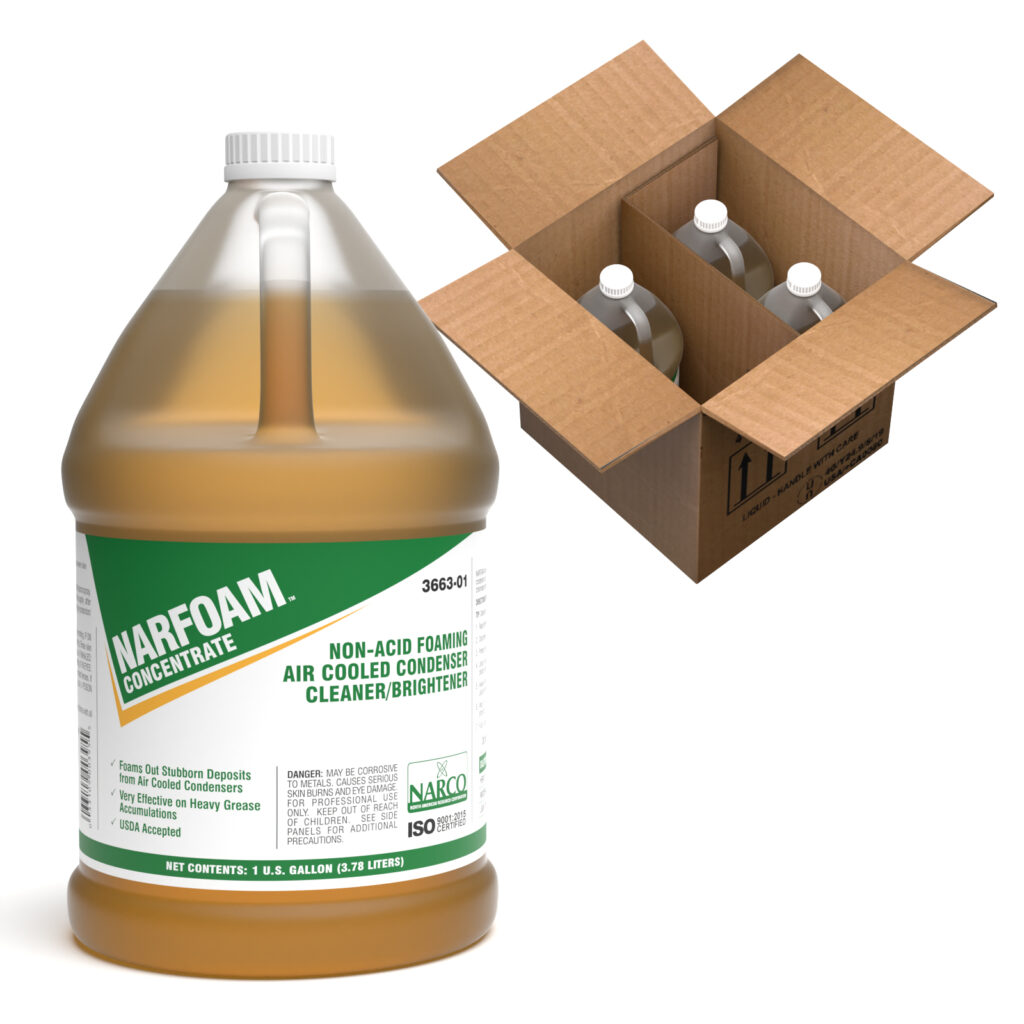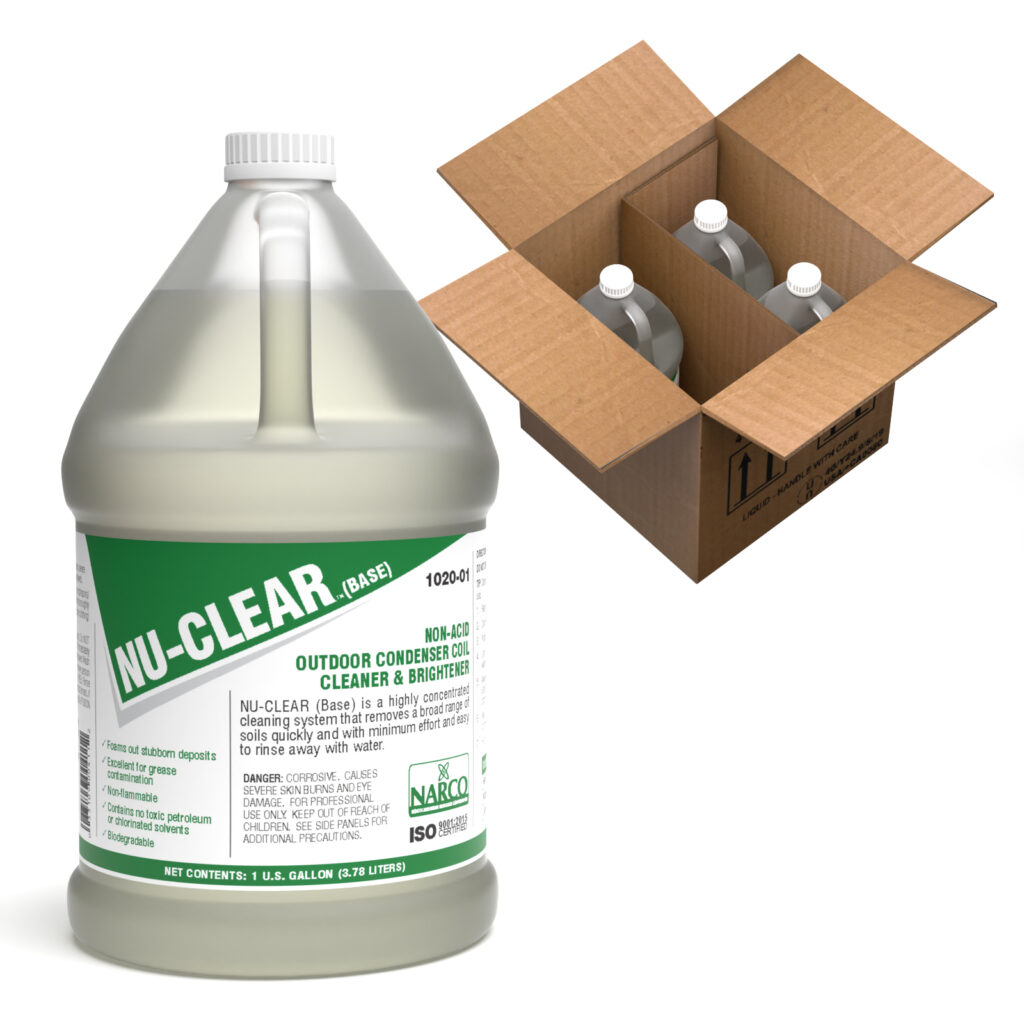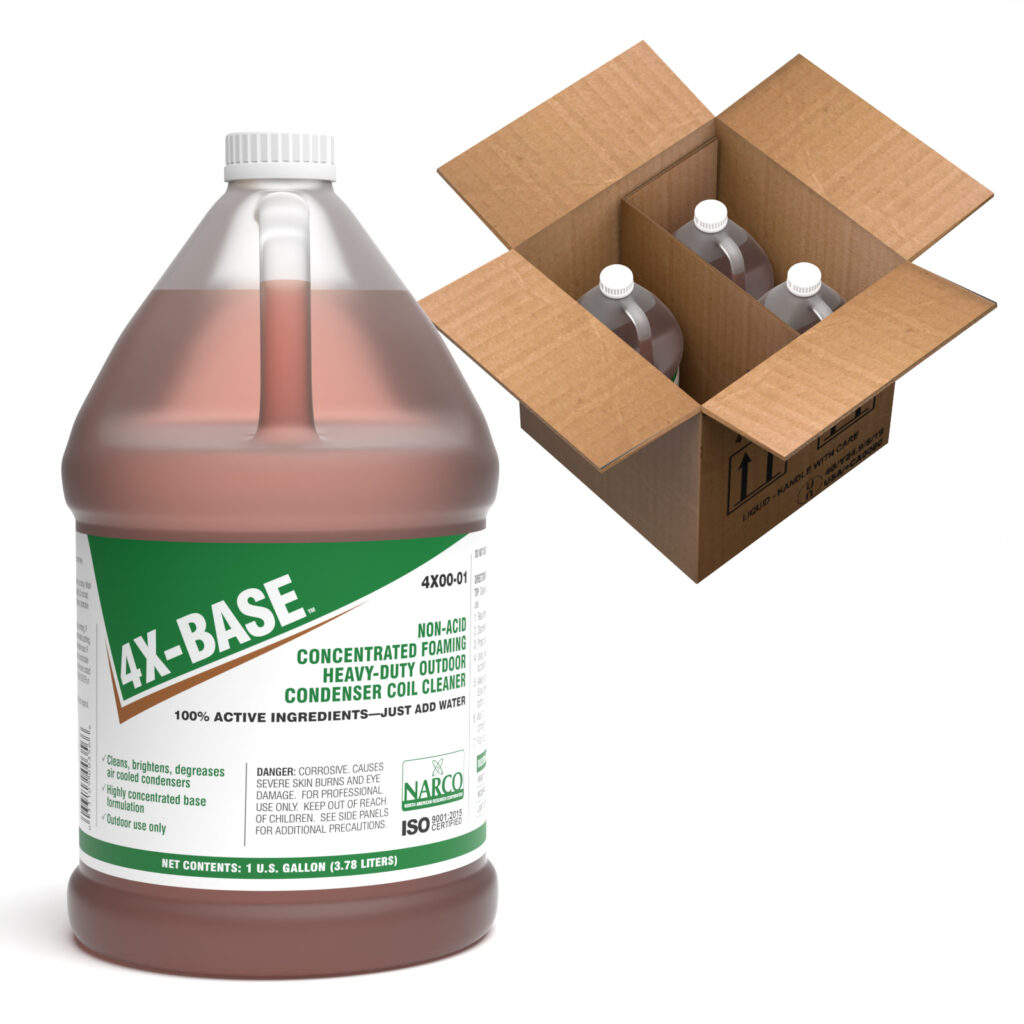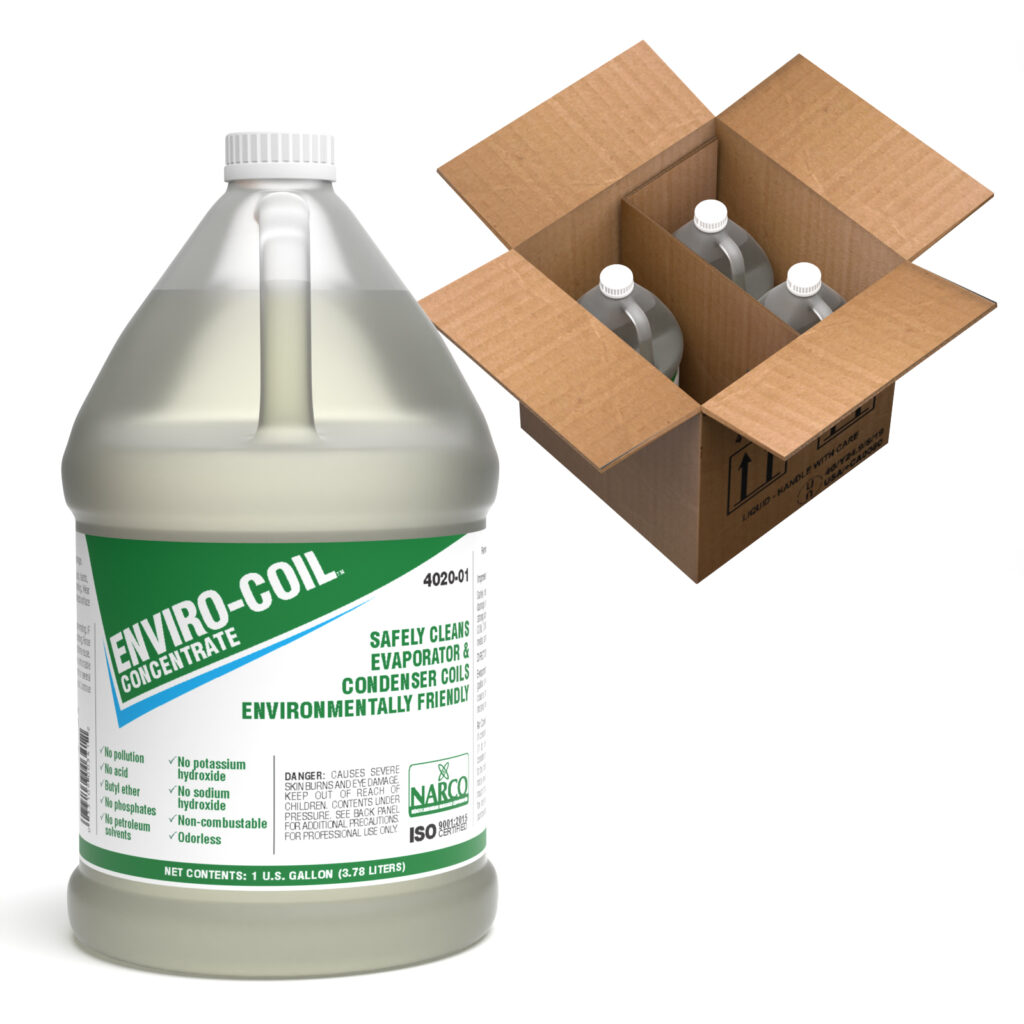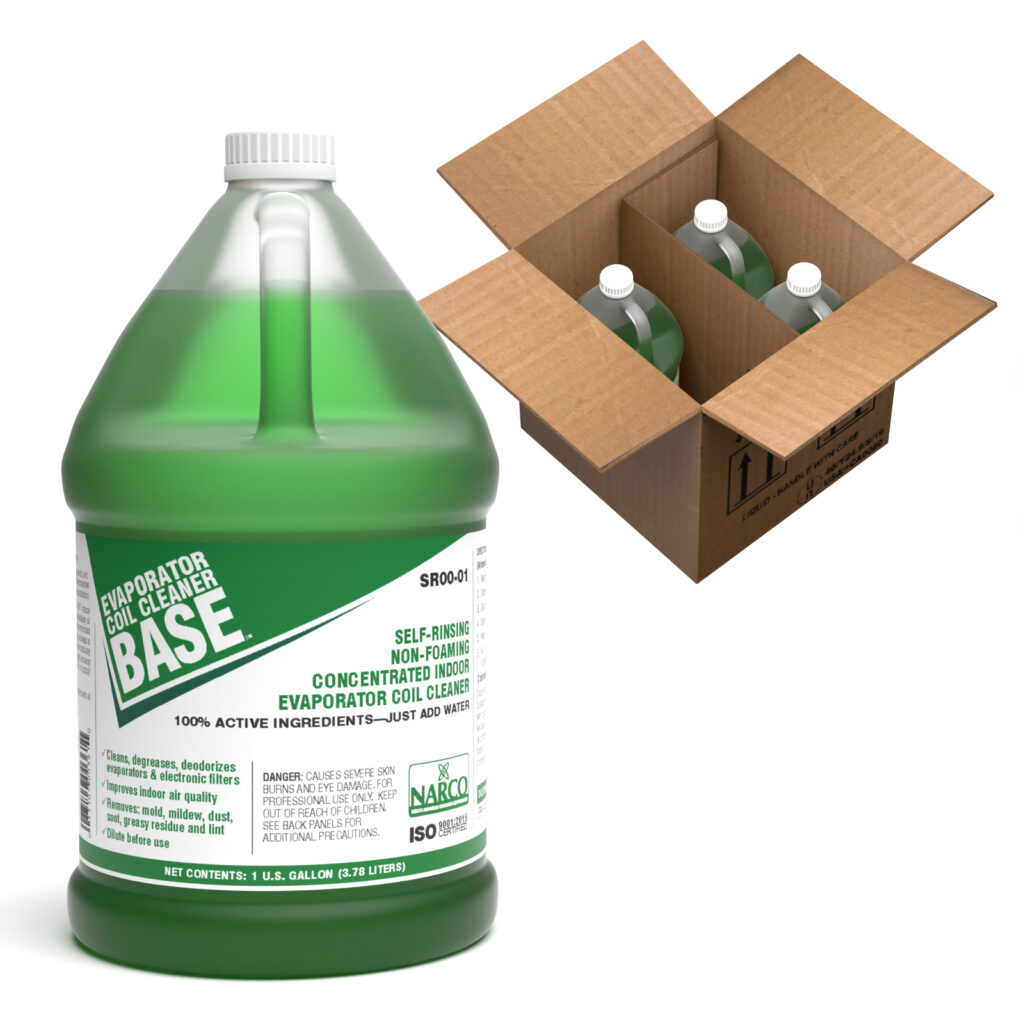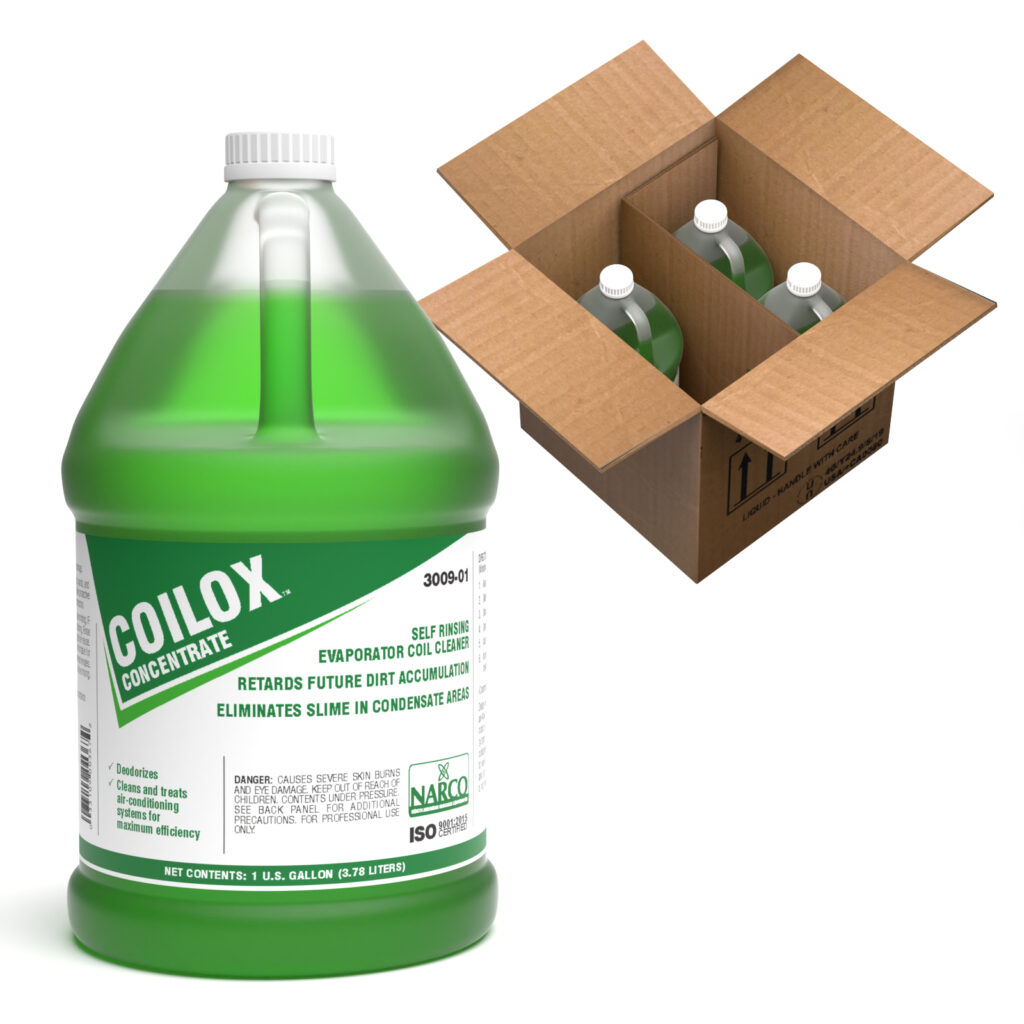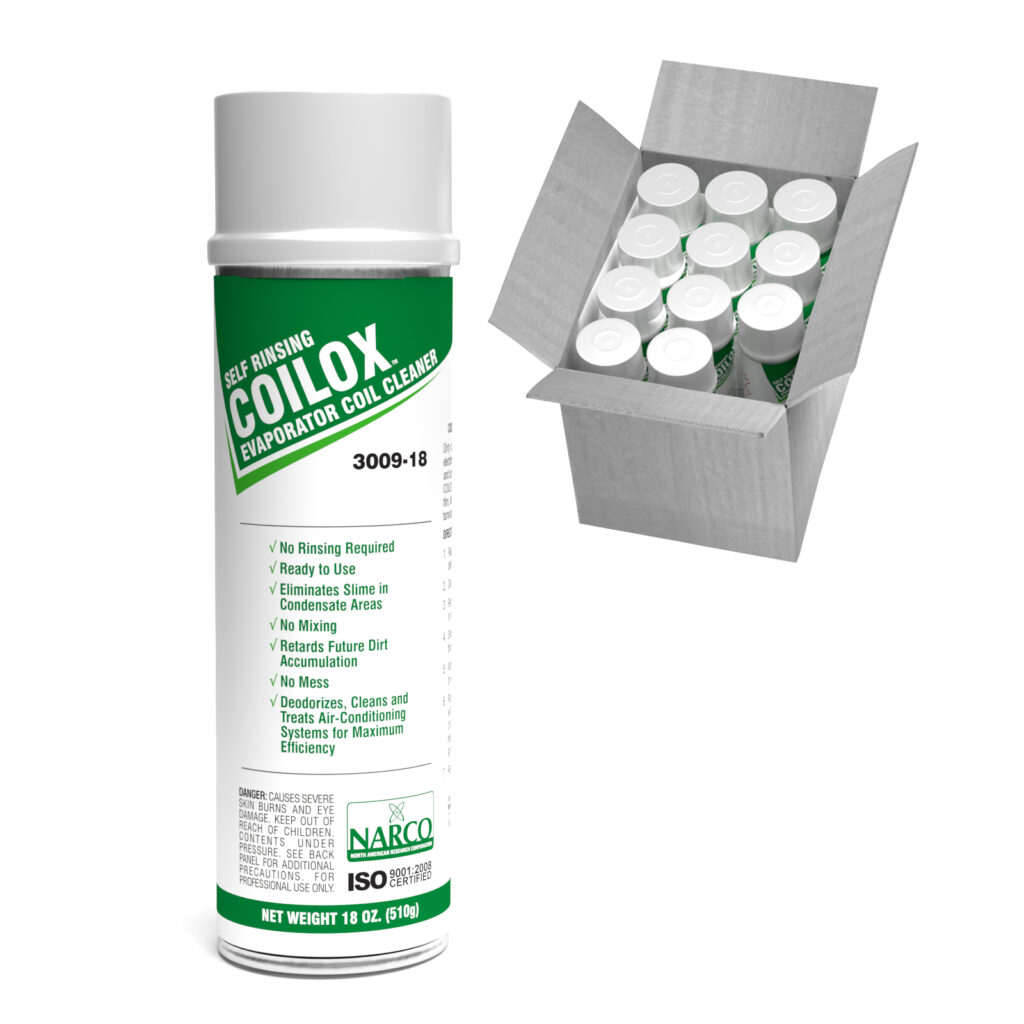The information herein is supplied courtesy of NORTH AMERICAN RESEARCH CORPORATION and is for information purposes only. It is not intended to contain all necessary information to safely use coil cleaning materials. Its intent is to offer useful tips to supplement the knowledge of trained professional air-conditioning technicians.
1. Use the proper cleaner for the job (Evaporator Cleaner/Condenser Cleaner).
2. Always read and follow label directions.
3. Use recommended safety equipment.
4. Never mix different brands of coil cleaner – either in the bottle or on the job.
5. Never use acid-type cleaners indoors.
6. Carry coil cleaner in plastic pan on service truck.
7. When outdoors, always spray downwind and use a coarse spray to avoid misting.
8. When cleaning roof top units always use enough water to rinse cleaning material completely off roof.
9. Do not leave coil cleaner or empty bottles unattended at job site.
10. Treat coil cleaning products with care, they are industrial products designed for professional use. Misuse can cause personal injury, equipment deterioration and environmental damage.
It is important when discussing cleaning coils to differentiate between evaporator coils and air-cooled condensers. When you consider the equipment to be cleaned, its function and probable location, and the cleaner used on each, you can readily see we are facing two completely different cleaning problems.
It is unfortunate, but many contractors seem to feel “coil cleaner is coil cleaner.” This situation has been caused by the misconception that all coil cleaners are virtually the same and by the total lack of industry standards for coil cleaners. Many coil cleaning products sold today are produced by companies whose business consists of producing cleaners for just about any purpose from washing buses to cleaning coils. Unfortunately, many of these producers are unaware of the mechanical function of an air-conditioning system, and consequently, it is not uncommon to find a product on the market that, even if used exactly according to label directions, may cause serious problems. Obviously, this presents quite a quandary for the parts department personnel and the service technician.
To help clarify the situation, let’s take a look at different types of coil cleaners, the job they are expected to accomplish, and commonly used ingredients found in various types of cleaners.
Acid-Type Coil Cleaner: Primary hazardous ingredient: Hydrofluoric Acid, (HF) or Ammonium Bifluoride, (ABF) Nar-Coil Concentrate 3020
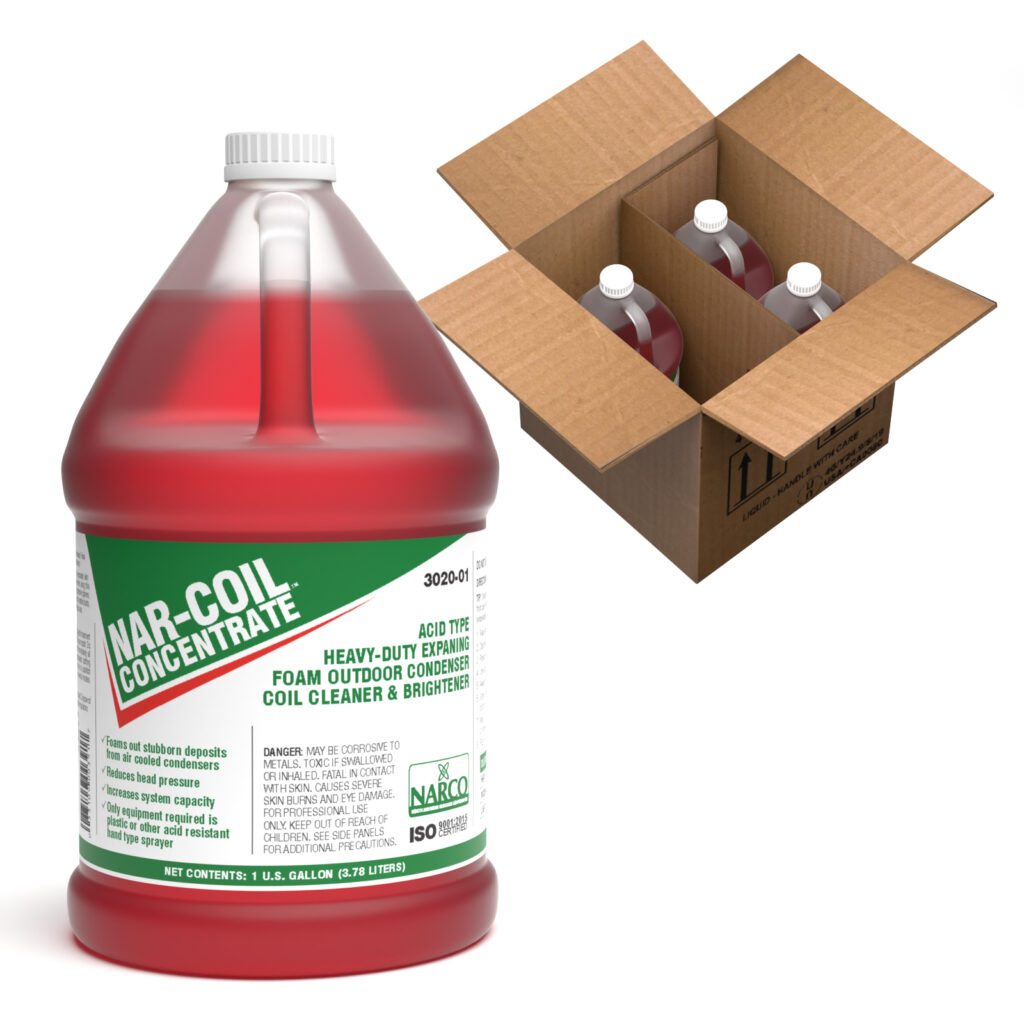
Hydrofluoric acid, while an extremely hazardous material, is used in coil cleaners to etch and brighten aluminum. The etching of the aluminum removes contaminants by removal of the substrate under the contamination. This process creates hydrogen gas, which is entrapped by the detergents in the cleaner forming a foam that increases surface contact time on vertical surfaces, as well as pushing contamination outward from the center of the coil. It is a very effective method of cleaning and is widely used.
Relatively new in our industry are acid-type cleaners containing Ammonium Biflouride, (ABF). Many of the products containing Ammonium Bifluoride claim to be safe, or safer than products containing Hydrofluoric Acid. When Ammonium Bifluoride is dissolved in water it yields a byproduct, Hydrofluoric Acid. Therefore products containing Ammonium Bifluoride should be treated with the same cautions as products containing Hydrofluoric Acid.
These types of products should never be used indoors to clean an evaporator or chilled water coil. They should be used and labeled only as an air-cooled condenser cleaner. For outdoor use, see items 1-7 below.
Non-Acid Coil Cleaner (Foaming): Primary hazardous ingredient: potassium or sodium hydroxide. Nar-Foam Concentrate 3663, Nu-Clear 1020, Base 4X00-01
Potassium or sodium hydroxide are widely used as active ingredients in coil cleaners. They clean by the same etching and hydrogen gas production method listed above.
Although they do not brighten aluminum quite as well as hydrofluoric acid, they are much safer to personnel and the environment. In heavy concentrations, either of these materials will product hydrogen gas when in contact with aluminum forming thick foam. Alkalines are generally more effective in removing greasy contamination than are acids. With proper use, alkalines can be used on either evaporators or condensers. In heavy concentration, alkalines can be used on air-cooled condensers to clean, create foam, and brighten aluminum much the same as hydrofluoric acid.
In a highly diluted form, these materials can be used to increase alkalinity (pH) of cleaning solutions. At high dilution, there will be no etching of aluminum and, therefore, no hydrogen gas and no foaming action. Highly diluted alkaline hydroxides can safely be used on evaporators – but must be rinsed after application. Of the two alkaline hydroxides listed above, potassium and sodium, sodium is the cheapest but it is also the least soluble, therefore, potassium hydroxide is the best choice for use in coil cleaner. Being more soluble, potassium hydroxide rinses off coils much easier, reducing the possibility of equipment damage.
To sum up the preceding:
1. All of the above ingredients function somewhat similar in use on aluminum finned coils. In high concentration, the acid product etches the coil, producing gas and foam. In high concentration, the alkaline product etches the coil, producing gas and foam.
In a highly diluted form, the acid product loses effectiveness (not enough acid to etch metal and create gas). In highly diluted form the alkaline product will not etch metal and produce gas, but it will increase pH of the cleaning solution resulting in quick cleaning action.
2. Cleaners containing hydrofluoric acid or ammonium bifluoride are for air-cooled condensers only, outdoors.
3. Cleaner containing either potassium hydroxide or sodium hydroxide:
A. In high concentration: (high enough to produce foaming action from etching and gas release) – air-cooled condenser only, outdoors.
B. In dilute concentrations, – OK for evaporators when diluted enough that etching and gas release (foaming) does not occur.
Both types of cleaners should be completely rinsed after application.
Bad things happen when either of these two types of products are used on evaporators in high enough concentrations to cause foaming (etching and hydrogen gas release):
4. Hydrogen gas is flammable – explosive in closed-up areas like an air handling unit.
5. Hydrogen gas created by either product is highly corrosive and will possibly get into air-conditioned space via ductwork.
6. The etching process will cause normal condensate flow patterns to be destroyed, in some cases causing condensate carryover and bacterial fouling in ductwork.
7. Failure to thoroughly rinse either of these products will result in serious equipment damage. It is difficult in most installations to thoroughly rinse an evaporator. If the evaporator is not thoroughly rinsed, the evaporator will do its job and remove the moisture (i.e., water) from the cleaner and further concentrate the corrosive ingredient to the point it will cause pitting, electrolytic corrosion, and possibly complete coil failure.
It is important to always rinse any coil cleaner that contains acid, potassium hydroxide or sodium hydroxide.
HYBRID TYPE (CONDENSER & EVAPORATOR)
EVAPORATOR TYPE
Evaporator cleaners should not etch aluminum or produce hydrogen gas (foam). Instead they should be non-corrosive, as non-toxic as possible, and not contain ingredients that could cause system deterioration or toxic or noxious odors in air-conditioned space.
An evaporator cleaner is designed to penetrate and emulsify contaminants, thereby making them water soluble so that either rinsing or condensation will remove them from the coil. Hydro-Balance products utilize sodium metasilicate as a pH builder and corrosion inhibitor, as well as surfactants and non-toxic solvents to accomplish the job. They are virtually odorless, do not produce flammable hydrogen gas, will not etch aluminum, and yet clean very well.
The cleaning problems on evaporators are completely different from those on air-cooled condensers. Evaporators run cold, condensers run hot. Evaporators produce condensation, condensers do not. Evaporators supply indoor air, condensers do not.
As indicated above it is important to differentiate between evaporators and condensers. To grab a bottle of “coil cleaner” and use it on both can cause problems. Evaporator cleaners are not very effective on air-cooled condensers as the contamination is, in effect, baked on. Conversely, using an air-cooled condenser cleaner on an evaporator is roughly equivalent to using oven cleaner to wash your car.
